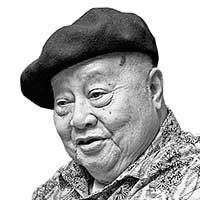Memories of Hong Kong

I have been keenly following reports on the massive demonstrations in Hong Kong and wondering if Beijing will crack down on the protesters as brutally as they did at Tiananmen Square 30 years ago. Those Beijing despots are deliberate. In its present state of economic ascendancy, does China still need Hong Kong as a global financial center? China can dispatch the Peoples Liberation Army at any time to discipline the rambunctious former crown colony or it could simply starve it. I am anxiously waiting.
I first went to Hong Kong in the early 1950s, courtesy of Philippine Airlines. We flew there on a twin-engine plane. Kai Tak Airport, close to the sea, was surrounded by low brick buildings. There were no skyscrapers on the main shopping streets, Nathan Road in Kowloon and Queen’s Road on the island. Bat-winged Chinese junks crisscrossed the bay.
In 1961, I became managing editor of the regional Asia Magazine in Hong Kong, and moved my family there. The slums that crawled up the peak were being dismantled and high-rise tenements were rising in their place. We rented an old house in Kowloon-tong. Our next-door neighbor was a Peking Opera actress and we often watched her rehearse in her garden.
There were no Filipino maids in Hong Kong then. Our household help and driver were from Canton. My kids were in grade school and were learning Cantonese from their from our ayah. One morning, my wife came upon her cleaning chicken intestines, which Filipino housewives normally throw away. She was including them in the dish she was cooking.
I often drove visitors to the New Territories which were still rice fields and villages. We often stopped at Tai Po for meals or drove all the way to Lok Ma Chau from where we could see the mainland and its watch towers. The mainland was forbidden. I tried very hard to go there but couldn’t.
The Communists had two stores in Hong Kong, one on Queen’s Road and the other in Kowloon, close to the Star Ferry. Goods from China, including the powerful liquor, Maotai, were available at these stores.
I had dreams of writing about China, particularly about its land reform program. I decided to learn Cantonese. It has nine tones. I shifted to Mandarin, which has five only. In just a couple of weeks I had given up.
I visited the University of Hong Kong. Its president, Wang Gungwu, was an old acquaintance whom I met way back, when he attended a literary conference set up by the late NVM Gonzales. He took me to the university library and showed me shelves and shelves of books in Chinese and English on China’s land problem. I gave up the project, too, but not the ambition to see China. That came in 1979, when Mao had already died. Before leaving for Canton, we stayed in Hong Kong and I concluded food in Hong Kong was much better than on the mainland. At the Peking Hotel in Peking, where we stayed, I had the worst roast Peking duck ever.
I marveled at the ancient craftsmanship of the Chinese. At Cat Street, I bought old furniture which I brought back to Manila. My wife ordered a new Chinese dining table set and a month after it had been delivered, a workman visited the house. He had a tool box and he immediately went to the table and started buffing it. He made it, he said, and he was polishing it for free. I related this to a Hong Kong friend much later and he said wood makers don’t do that anymore.
I had a very good friend in Hong Kong, Harvey Liang. He often came to the house for dinner. I showed him two scrolls I brought from Malacca, thinking they were antiques. I had them mounted. Are they poetry? He smiled; they were restaurant menus.
Norman Soong, the editor of the Asia Magazine, was a gourmet and he introduced me to exquisite Chinese cuisine, none of the dishes were available in Manila. He also collected Chinese porcelain, and I wanted to do the same. We went around the many antique shops in Hong Kong. Then we went to the Wan Chai district where much of his collection was stored. There was a room he did not want to show me because the ceramics in it were fakes. I didn’t pursue my collector ambition.
Because of its closeness to the Philippines, Hong Kong has always been a haven for Filipinos, for the ilustrados of Rizal’s generation. In all those decades that China was closed to the world, it was from Hong Kong that avid China watchers peeped into that vast country and reported on Mao Zedong’s grip, the Cultural Revolution, the Great Leap Forward, and the tragic famine of the late 1950s.
I left Hong Kong in 1963 to go to Ceylon, the old name for Sri Lanka, as Information Officer of the Colombo Plan. I left in 1965 and returned to Manila to set up Solidaridad. On occasion, I dropped by Hong Kong on transit flights to Europe and to the United States, saw the slums in Kowloon and Victoria replaced by skyscrapers, the tunnel built across the harbor and the junks disappear from the waters. We visited the city, too, when my daughter, Jette, was living there, and saw its sprawling airport built, its stores bountiful with everything imaginable, and the Hong Kong shop keepers change from the friendly and attentive clerks they once were. Every time my son, Eddie, visited from Hong Kong, he always brought roast goose with him.
Precisely because they are tyrannized, the Chinese people are susceptible to infection by the Hong Kong virus. What then if, at any time now, demonstrations will erupt in China’s major cities? Now the people of Hong Kong want more freedom. They never really had it under the British. Will Beijing give them what they want?
- Latest
- Trending


























